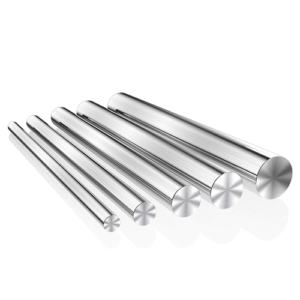Introduction

Stainless steel has become an indispensable material in modern manufacturing processes, offering a combination of strength, corrosion resistance, and versatility. Among the various grades of stainless steel, Stainless Steel 420 stands out for its unique properties and wide-ranging applications.
Properties of Stainless Steel 420
Stainless Steel 420, a martensitic stainless steel, is known for its high hardness, moderate corrosion resistance, and good formability. With a composition of 12% chromium, it offers excellent corrosion resistance in mild environments. Additionally, its carbon content provides exceptional strength and wear resistance, making it ideal for various manufacturing applications.
Applications in Modern Manufacturing
- Automotive Industry: Stainless Steel 420 plays a crucial role in the automotive sector due to its durability, corrosion resistance, and cost-effectiveness. In this industry, it finds applications in the production of critical components such as shafts, valves, fasteners, and gears. The high strength and wear resistance of Stainless Steel 420 make it ideal for components subjected to high stress and friction, ensuring the reliability and longevity of automotive systems.
- Aerospace Industry: In the aerospace industry, where performance, reliability, and safety are paramount, Stainless Steel 420 is valued for its exceptional strength-to-weight ratio and resistance to fatigue and corrosion. It is commonly used in the manufacture of aircraft structural components, including brackets, fittings, fasteners, and landing gear components. The lightweight yet robust nature of 420 Stainless Steel contributes to the overall efficiency and performance of aerospace systems, meeting stringent regulatory standards and ensuring the safety of aircraft operations.
- Medical and Healthcare Sector: Stainless Steel 420 is widely utilized in the medical and healthcare sector for its biocompatibility, corrosion resistance, and ease of sterilization. In surgical instruments and medical devices, such as forceps, scissors, scalpels, and dental tools, 420 Stainless Steel offers the necessary strength, hardness, and precision required for surgical procedures. Its resistance to staining and pitting ensures the longevity and hygiene of medical instruments, contributing to patient safety and healthcare outcomes.
- Manufacturing and Tooling: Beyond specific industries, 420 Stainless Steel finds versatile applications in manufacturing and tooling applications. Its hardness, machinability, and wear resistance make it suitable for the production of molds, dies, cutting tools, and industrial equipment. 420 Stainless Steel is preferred for tooling applications where high precision, durability, and resistance to wear and deformation are essential. From plastic injection molding to metal stamping, 420 Stainless Steel enhances manufacturing efficiency and quality across various sectors.
- Oil and Gas Industry: Another significant application area for Stainless Steel 420 is in the oil and gas industry, where it is utilized in the production and processing of petroleum products. In this sector,420 Stainless Steel is employed in equipment such as valves, pumps, fittings, and drilling components due to its resistance to corrosion, abrasion, and high-pressure environments. Its reliability and performance under harsh operating conditions ensure the integrity and efficiency of oil and gas extraction, refining, and distribution processes.
Advantages and Limitations
While 420 Stainless Steel offers numerous advantages, including high hardness, corrosion resistance, and formability, it also has limitations. One such limitation is its susceptibility to corrosion in aggressive environments compared to other stainless steel grades like 316. Additionally, its hardness can pose challenges in machining processes, requiring specialized tools and techniques for fabrication.
Case Studies

Let’s explore some real-world applications of Stainless Steel 420:
| Industry | Application |
|---|---|
| Automotive | Drive shafts and engine components |
| Aerospace | Aircraft structural components |
| Medical | Surgical instruments and implants |
| Manufacturing | Tooling and cutting equipment |
Conclusion
In conclusion, Stainless Steel 420 plays a crucial role in modern manufacturing, offering a unique combination of properties that make it suitable for a wide range of applications across various industries. Its high hardness, corrosion resistance, and formability make it a preferred choice for critical components in automotive, aerospace, medical, and manufacturing sectors.
FAQ
Q: Is Stainless Steel 420 suitable for outdoor applications?
A: While Stainless Steel 420 offers good corrosion resistance in mild environments, it may not be the best choice for prolonged exposure to harsh outdoor conditions.
Q: Can Stainless Steel 420 be welded?
A: Yes, Stainless Steel 420 can be welded using common welding techniques such as MIG, TIG, and SMAW. However, post-weld heat treatment is often recommended to restore its mechanical properties.
Q: What are the alternatives to Stainless Steel 420?
A: Depending on the specific requirements of the application, alternatives to Stainless Steel 420 include grades such as 316, 304, and 410, each offering different combinations of properties suited for various environments and conditions.
